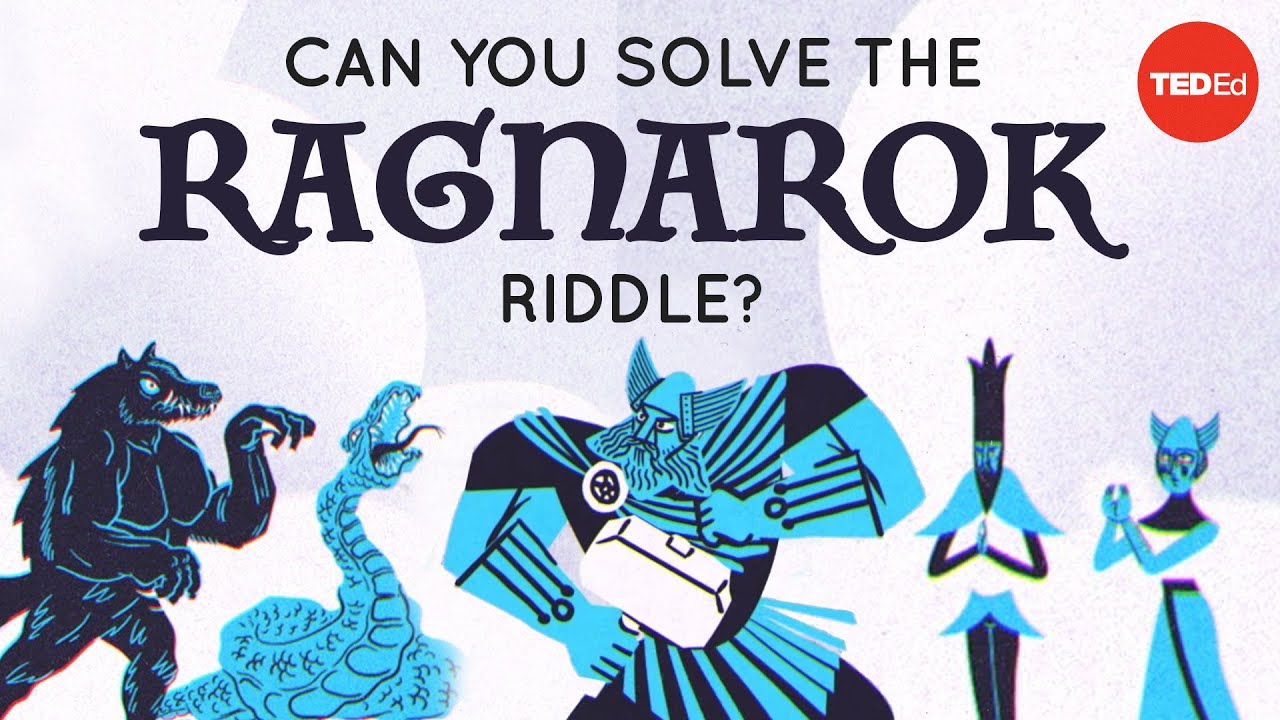
Can you solve the Ragnarok riddle? - Dan Finkel
Ragnarok. The fabled end of the world,
when giants, monsters, and Norse gods
battle for the future.
The gods were winning handily until
the great serpent Jörmungandr emerged.
It swallowed Valhalla,
contorted itself across the land,
and then merged into one continuous body
with no head and no tail.
As it begins to digest Valhalla,
an exhausted Odin explains that he has
just enough power to strike the creature
with one final bolt of lightning.
If you magnify his blast
with your fabled hammer, Mjölnir,
it should pierce the massive serpent.
You’ll run with super-speed
along the serpent’s body.
When you hold your hammer high,
Odin will strike it with lightning
and split Jörmungandr open at that point.
Then, you’ll need to continue
running along its body
until every part of it is destroyed.
You can’t run over the same section twice
or you’ll fall into the already blasted
part of the snake.
But you can make multiple passes
through points where the creature
intersects its own body.
If you leave any portion un-zapped,
Jörmungandr will magically regenerate,
Odin’s last power will be spent,
and Valhalla will fall forever.
What path can you take to destroy
the serpent?
Pause now to figure it out yourself!
Answer in 3
2
1
One powerful way to solve problems
is to simplify.
And in this case, we can focus
our attention on the two things
that are important for our path:
intersections and the stretches
of snake between them.
Or, as they’re referred
to in graph theory, nodes and edges.
The edges are important
because they’re what we need to travel.
And the nodes matter
because they connect the edges,
and are where we may need to make choices
as we run from edge to edge.
This simplification into nodes
and edges leaves us
with a ubiquitous and important
mathematical object known as a graph,
or network.
We just need to figure out how to travel
what mathematicians call an Eulerian path,
which traces every edge exactly once.
Instead of looking at the path as a whole,
let’s zoom in on a single node.
During some moment in your run,
you’ll enter that node, and then exit it.
That takes care of two edges.
If you enter again,
you’ll need to exit again too,
which requires another pair of edges.
So every point along your path
will have edges that come in pairs.
One edge in each pair will function
as entrance; the other as exit.
And that means that the number of edges
coming out of every node must be even.
There are just two exceptions:
the start and end points,
where you can exit
without entering, or vice versa.
If we look at the network
formed by the serpent again,
and number how many edges
emerge from each node,
a pattern jumps out that fits
what we just saw.
Every node has an even number
of edges emerging from it, except two.
So one of these must be the start
of your route, and the other the end.
Interestingly enough, any connected
network that has exactly 2 nodes
with an odd number of edges
will also contain an Eulerian path.
The same is true if there are no nodes
with an odd number of edges—
in that case the path starts
and ends in the same spot.
So knowing that,
let’s return to our full graph.
We can begin by taking care
of this edge here.
Now we can zig-zag back and forth
across the whole snake
until we reach the end.
And that's just one solution—
it helps to be systematic,
but you’re likely to happen
upon many others
once you know where to begin
and end your run.
You hold your hammer high
at the opportune moment,
and Odin sends the world-saving surge
of lightning at you.
Then you run
like you’ve never run before.
If you can pull this off, surely nothing
could stop the might of the Norse Gods.
And if something like that were out there,
slouching its way towards you…
well, that would be a story
for another day.